The American Amiga (320х200, 370 colors)
|
The European Amiga (320х256, 398 colors) |
When did photography first begin to be handled on the PC? Which of these systems have made history and which have remained virtually unknown? The following review is an attempt to answer these and related questions with technical details. Of course, it's about the Amiga, but not only.
For an arbitrary picture to be perceived as a color photograph, you need presumably more than 100 colors in the palette on the displaying equipment. The first computer that could display more than 100 colors was the Atari 400, which began production as early as 1979. It was also the first computer designed largely by the engineering genius of Jay Miner. The 8-bit Atari's that were produced until 1992 could display up to 256 (pre-1981 models could only do 128) colors! However, there were too many restrictions on using different colors on the same screen. Therefore, up until recently, the Atari never managed to produce images that were perceived as photographic. It was only in the 80's that computers appeared that could actually show photos.
For further we will need a sample picture, which we will convert to various computers of the 80s. Let's take a random picture of 1024x1024 with 69344 colors, generated by the AI system.
It is generally accepted that the first mass-produced computer to actually display pictures on the screen was Jay Miner's second and last computer, the legendary Amiga, which went into production in 1985. The Amiga, using a special graphics mode, could display up to 4096 colors on the screen simultaneously. Using this mode also imposes serious limitations, making it very difficult to use for dynamic graphics and, in particular, games. This mode actually uses only 16 basic colors from a palette of 4096 colors and allows the current pixel to change one of the RGB components of the previous pixel. It turns out that this approach works well and is actually some form of lossy visual information compression. For each pixel in this mode, 6 bits are allocated instead of 12 as would be needed to display 4096 colors without limitation. Moreover, in addition to the typical mode, when 16 base colors are defined for the entire screen, you can use and SHAM mode, when the base colors are defined line by line. However, it turned out that SHAM often gives almost imperceptible increase in quality and therefore is almost never used. The disadvantage of the photographic mode of the Amiga is the laboriousness of the optimal conversion of an arbitrary picture in this format. A modern cross-utility ham_convert can work on one picture for more than a dozen minutes on a modern desktop!
Theoretically, the first Amigas could display images up to 362x290 for PAL models and 362x241 for NTSC models with 4096 colors, which was fantastic in the mid-80s. For comparison, the famous Apple Macintosh could show 512x342 and only in monochrome. The Atari ST could show no more than 16 colors from the palette of 512 colors in 320x200 image. The professional EGA card for the IBM PC compatible allowed to display only 16 colors from a palette of 64 colors in a 640x350 raster. Although it should be noted that TVs and monitors for the Amiga of those years could not show more than 270 lines for PAL systems and 220 for NTSC. Besides, Amiga OS till the 90th supported only 320x200 resolution (320x256 for PAL) for multicolor modes and that's why almost all pictures were no larger than this size.
Following the Amiga in the same 1985 appeared the first computers of the MSX-2 standard, which could show simultaneously 256 colors in a raster up to 256x212 and without any limitations. However, the palette was also fixed in 256 colors. It's hard not to notice that for such graphics the Z80 at the effective frequency of about 3.1 MHz was rather weak. And even the presence of a powerful video processor did not solve the problem. The ZX Spectrum with its primitive graphics used the processor 10 percent faster than MSX! To convert photos to the MSX-2 format there are up to a dozen cross utilities and even an online service. To feel the degradation of quality in comparison with Amiga, compare the enlarged pictures.
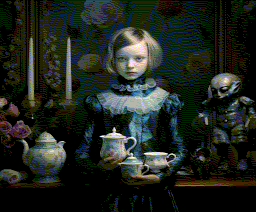
MSX-2 (256x212, 65 colors)  x3
x3
In 1987 came the very rare Geneve 9640, the last model in the once very famous TI-99/4 family of home computers. It used the same video chip as MSX-2, and so could display any graphics of that standard. Interestingly, MSX used the video chip from the TI-99/4...
And in 1987 came the VGA card for IBM PC compatible and the second Macintosh appeared. This professional hardware made it possible to display 256 colors at the same time with no limitations from a palette of hundreds of thousands of colors. This allowed very high quality photographic images to be displayed on the screen without any tricks. The Macintosh II can output a photographic image up to 512x384 (or even 640x480 with a more expensive video system), and VGA up to 360x240 (or 360x480) on a standard monitor. However, the vast majority of programs only partially use the VGA capabilities, working with the standard BIOS raster of 320x200. The large palette size allows efficient use of all free colors, which gives VGA or Macintosh II index colors an advantage over MSX-2 or sometimes even Amiga when displaying photos.
A typical VGA image (320х200, 256 colors)
|
A max VGA image for the standard monitor |
In fact, VGA video modes can be created as needed in a fairly straightforward manner. 256-color mode can be obtained in images up to 400x600. It is only necessary to meet the specifications of the used monitor and take into account that with increasing number of lines the refresh rate of the screen decreases and consequently the quality of the image.

The Macintosh II (512x384, 256 colors)  x2
x2
In the same year Acorn Archimedes was released, which for a short time made the UK and Europe in general the leaders in technical innovation for PCs. Besides being up to 10 times faster than the Amiga, Archimedes could display 256 colors from a 4096-color palette in 320x256 to 1056x256 images on inexpensive monitors. And for expensive monitors, modes with more lines were available, such as 640x512 and even 800x600! The Archimedes video system is very fast and flexible, and in fact the user can create new video modes at will, just like with VGA. But the Archimedes video system has a not insignificant disadvantage: in 256-color mode, using the palette is difficult because there are only 16 palette registers instead of 256. This limits us to have 16 fixed variations for each of the 16 free colors. That's why you can't select all 256 colors absolutely arbitrarily, and some of the selected colors sometimes need to be replaced by similar ones. In the worst case, only 16 colors remain instead of 256, in the best case, all colors are preserved. Because of this drawback, it is quite typical to lose more than two-thirds of the colors, leaving less than 80 free colors. Qualitative replacement of one palette by another is a very difficult and still unsolved task. It is partially solved by dithering, but this reduces the level of detail. In some demos, it was possible to radically increase the number of colors by changing the palette while drawing an image, but this required super-precise synchronization of the video chip and the processor via a timer.
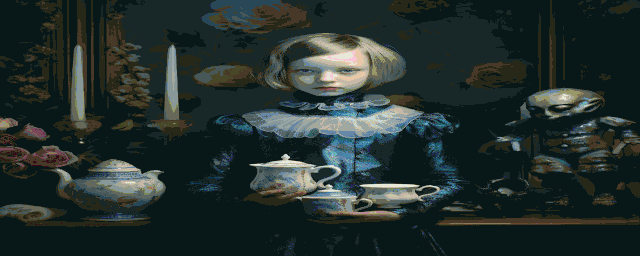
The Archimedes (640x256, 50 colors)  x2
x2
In 1987, in another island nation, the first model of the Sharp X68000 series of home computers was released, which for some time was the best gaming computer in the world by several key parameters. This model could display up to 256 (since 1988 up to 65536!) colors from a palette of 65536 colors in a raster of up to 512x512. However, despite such advanced graphics and generally decent specifications, this computer was seen almost nowhere except Japan. Probably because of the price, which was much higher than that of the Amiga. Surprisingly, the Amiga and even the very successful Commodore 64 were almost completely unknown in Japan!
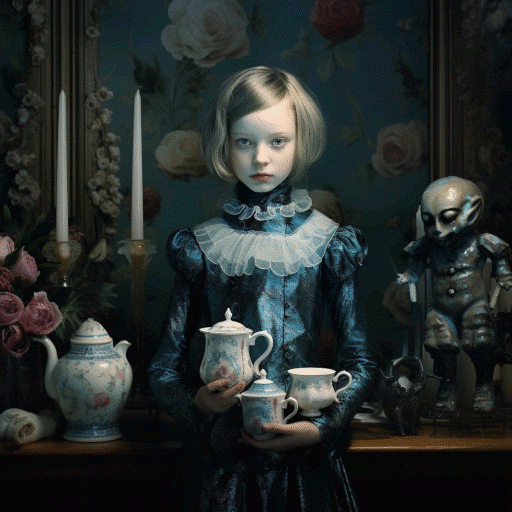
X68000 (512x512, 256 colors)  x2
x2
Japan produced other computers capable of beautifully displaying photographic images. The X68000 succeeded the previous Sharp X1 line of computers, which had been in production since 1982. The top-of-the-line X1 turbo Z, which was in production since 1986, has a 320x200 video mode with 4096 free colours, with a palette of the same 4096 colours. Surprisingly, the main processor of this top-end model was, as on the initial model, the Z80@4MHz, which is clearly too small for the video mode, where the screen image requires almost 96 KB of video memory.
Fujitsu, better known as a major player in the mainframe business, had been producing the FM-7 line of computers since 1982. The top-end models of these computers were labelled FM-77AV and were produced from 1985. They could use a video mode similar to the X1 turbo Z. And the latest models from the end of 1987 could even display 18 bpp (262144 free colours!) in a 320x200 image. The processor for all FM-77s was the Motorola 6809 at frequencies up to 2 MHz. Although the FM-77 was faster than the Sharp X1, it was not much faster and it was not enough to use 12 bpp graphics effectively, let alone 18 bpp. One wonders why they didn't use the pin-compatible Hitachi 6309 instead of the 6809. The 6309 can be up to 50% faster at the same frequency. By comparison, the Amiga is at least twice as fast as the FM-77, but typically only uses 5 bpp color graphics and very rarely 6 bpp.
NEC, Japan's largest chip and personal computer manufacturer, had been producing various variants of the PC-8800 series of computers since 1981. Some models of this line, produced from 1987, supported graphics up to 640x408 with 256 free colours or 640x204 with 65536 free colours from a palette of 65536 colours. However, the multicolour modes of the PC-8800, FM-77 and X1 turbo Z were almost never used. And these models themselves, capable of showing colour photos, were rare even in Japan and completely unknown in other countries.
The advent of the high quality graphics on mass-market office PCs, the appearance of the Acorn Archimedes and cheap Japanese multi-color computers removed obstacles to mass production of the Amiga, and it deservedly became a really popular computer, albeit 2 years late, which, however like the Atari ST, was sold more in Europe than in America. A similar story happened with Jay Miner's first computer, the Atari 400/800, which also had the obstacles for 2-3 years. A sad but typical situation when the genius of an engineer exceeds the level of available management. Here we can also remember Polzunov with his first industrial steam engine...
By the end of the 1980s, devices were available that allowed PCs to display a full-color image with more than 16 million colors on the screen. For the IBM PC, such video cards were called Super VGA. Raster grew to unthinkable for the beginning of the 80th sizes 1024x768. Similar qualitative growth occurred for the Macintosh II. Surprisingly, but since then the parameters of desktop displays have not grown much – today 1920x1080 raster is quite a common thing, and distinguishable colors have not increased at all. The growth for more than 30 years is only 3 times, although if we take the best mass products, the increase will be almost 10 times. In any case, it is not very impressive.
However, in the first half of the 80's there were other mass-produced computers that could display photographic quality images on the screen. And it is still rather obscure to this day.
As mentioned above, many attempts were made to make images look better on the 8-bit Atari, but the results were poor. Enthusiasts almost went bonkers trying different ways to improve the quality. The main problem was the huge number of variants appearing during image generation when it was not possible to output more than 9 colors per line. Only in 2012 a tool appeared, the cross-utility RastaConverter, which, using various tricks, in particular the use of sprites, can, sometimes at the cost of hours of work on modern hardware, get images that are relatively similar to the original color photos. In general, the result is rather dubious, although you can play with the parameters and try to improve things. It can drag you into endless and almost unproductive activity... It should be noted that PAL and NTSC systems display images with slightly different colors.
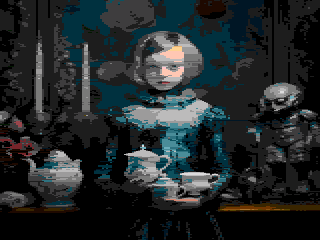
The Atari 800 PAL (320x240, 30 colors)  x3
x3
And the DEC Professional with the standard additional video card can display up to 4096 colors in 256x256 resolution without any limitations! Although there is information, which I unfortunately could not verify, that ancient monitors did not display more than 240x240 pixels. This series of computers was produced since 1982. But the peculiarities of using these systems led to the fact that until 2023 there was no program that could display a photographic image on the screen! And this in spite of the fact that the possibility of using 4096 colors simultaneously is prescribed in the official documentation! In the USSR a clone of the Pro 350 model was produced since 1985 under the name Элeктpoникa-85. Again, I have not yet been able to check whether this clone or the original Pro 325/350 can display color images beautifully.
Color graphics on the DEC Pro have unique characteristics. All proprietary software uses only a 960x240 raster with 8 colors selectable from a palette of 256 colors on the 325 and 350 models and 4096 colors on the 380 model. However, it is possible to work without a palette by specifying the color directly. Each color plane in this mode can be controlled independently, for example, the horizontal resolution of each plane can be different. By decreasing the resolution, you can adjust the brightness of a pixel more precisely. With 256 pixels in a row, we get 16 brightness levels, and with 512 – 4. For example, at a resolution of 512x256 you can have 64 colors. If we have different resolutions for all three planes, we get very exotic modes with details in three resolutions (1024x256, 512x256, 256x256) and 128 colors.
If there had been more enthusiasts among the DEC Pro users, the famous juggler could have appeared on the DEC Pro earlier than on the Amiga. Unfortunately, the enthusiasm of the users was only enough to theorize that the graphic capabilities of the systems allowed to show pictures. The picture below comes from a hastily made simple converter, but 4096 free colors allow not to strain.
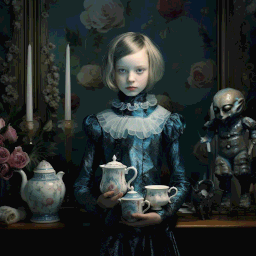
DEC Pro (256x256, 277 colors)  x3
x3
Other computers that could display images of inferior but almost photographic quality were the Commodore 264 series, produced from the beginning of 1984. These computers could display up to 121 colors on the screen, but with great limitations. For example, in a 320x200 image, you could have no more than 2 colors per 8x8 character matrix. This is a typical example of attribute clash, typical of many cheap computers of the 80's, such as the ZX Spectrum. However, due to the great flexibility of the video system, it is possible to reduce the limitation of 2 colors to a matrix of 8x2 by the increased load of the processor, actually getting 2 bits per pixel. And in 160x200 resolution, the limitation can be brought to 2 colors in 4x2 matrix with two additional colors per image line, getting a little more than 4 bpp. Such video modes require more than 18 KB per image. Therefore, they cannot be used on the Commodore 16, the most widely produced computer of the series, unless a memory expansion is done. The maximum raster for computers of this series is 320x288 for PAL systems, but as mentioned above, only emulators and modern monitors can display that many vertical lines. Monitors from the 80's could display no more than 256-264 lines. For NTSC, the maximum number of lines is 226, but practically, taking into account the capabilities of monitors of those years – 216-220. It should be noted that a quality picture cross-converter for these computers appeared only in 2007 and it can make images no larger than 304x248. When displaying such an image, the processor is occupied almost all the time only with its maintenance.
The rare Enterprise computer from 1985 has an 80x256 video mode. It uses 256 free colors from a palette of 256 colors. This produces photo-like images. The converter was made quickly, so the picture quality can probably be improved a bit.
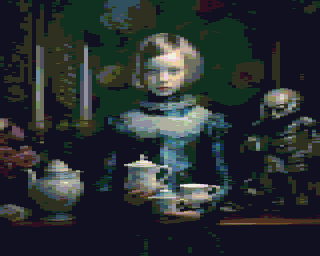
The Enterprise (80x256, 42 colors)  x3
x3
By the early 1990s, enthusiasts had discovered the ability to output several dozen colors (48 or even, with some limitations, 56) on a single line on the Atari ST, the first fully 16-bit home/office computer whose processor could even handle 32-bit data. This computer also was in production since 1985. Enthusiasts even found a way to display images up to 416x274, but unlike the Amiga, the increased resolution was never standardized on the ST. Outputting more than 16 colors per line requires changing the video chip's registers during rendering, which sometimes leads to so-called artifacts, random dots on the screen. Besides, such hacker work with colors leads to the fact that one line of the image is lost.
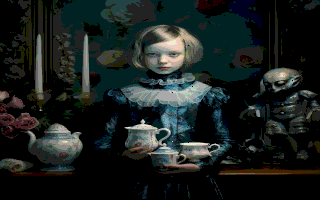
The Atari ST (320x199, 71 color)
 x3
x3
In 1986, the Apple IIgs was released, which can output up to 3200 colors from a palette of 4096 colors in a 320x200 image. However, in this mode, each line only outputs a maximum of 16 different colors, making the creation of high quality photographic images very problematic. It was not until after 2000 that means became available for relatively acceptable conversion to such a mode. However, perhaps due to the historical isolation of the IIgs community and its focus on the trends of the 8-bit Apple, no quality cross-tools for such conversions were ever made. So maybe someone in the future will be able to get a better quality image for the IIgs than the next one.
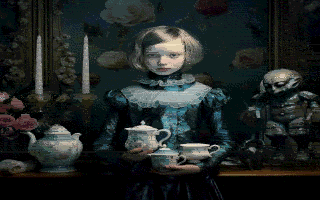
The Apple IIgs (320x200, 112 colors)
 x3
x3
Several models of multicolor computers were produced in the USSR since 1987-88. I know of two with a palette of 256 colors: the almost mythical Raduga computer and one of the most famous Soviet home computers, the Beктop-06Ц. Both were developed far from the major industrial centers by the efforts of a few enthusiasts. The Raduga in Omsk and the Vector in Kishinev. Multicolor graphics on the Vector are output in a 256x256 raster with 16 free colors. However, color replacement in the palette is made very cumbersome, which makes line-by-line color replacement almost impossible.
All Amiga, MSX-2, Enterprise, and Commodore 264 machines, as well as the top-of-the-line DEC Pro 380, can double the number of lines displayed by using all the lines of a typical 80's interlaced scan. However, interlacing creates an unpleasant flicker on the screen, so displaying photos is practically the best and only real use of interlacing.
Due to the fact that interlaced line pairs are actually partially superimposed, the actual resolution is not as spectacularly increased as it could be on a monitor capable of displaying twice as many lines without interlacing. Because of this effect, doubling the number of lines through interlacing is very difficult to emulate properly – there is probably no emulator that can display interlaced graphics as well as the real hardware. It should also be noted that interlacing is slightly less annoying on American systems because the flicker rate is 25 Hz for PAL and 30 Hz for NTSC. When interlaced on PAL systems, the number of output colors may be greater than specified due to the effect of color inversion on paired lines, e.g., the Commodore may show 240 colors instead of 121.
It is also worth mentioning that some retro-technology enthusiasts in their desire to see more colors on their first computer come to questionable techniques. The most typical of them is to show the superimposition of colors, alternating two or sometimes more pictures. This, as with interlacing, leads to unpleasant flickering and generally questionable quality. Although sometimes the results are not bad, but this is usually the result of painstaking manual work and a significant reduction in the final resolution – automatic converters on average work poorly.
Finally, a table of the memory size in bytes required to display a photographic image on each system, listed in chronological order. After the slash is the number of free colors, if this number is missing, all colors are free.
| System | Resolution | Colors | Palette | Size |
|---|---|---|---|---|
| Atari 800 | 320x240 | 256/2 | 256 | ≈21000 |
| DEC Pro | 256x256 | 4096 | 4096 | 98304 |
| Commodore 264 | 304x248 | 121/2 | 121 | ≈28000 |
| Enterprise | 80x256 | 256 | 256 | 20480 |
| Atari ST | 320x199 | 512/48 | 512 | ≈42000 |
| Amiga | 360x283 | 4096/16 | 4096 | 76434 |
| MSX-2 | 256x212 | 256 | 256 | 54272 |
| Apple IIgs | 320x200 | 3200/16 | 4096 | 37000 |
| Sharp X1 turbo Z | 320x200 | 4096 | 4096 | 96000 |
| Acorn Archimedes | 800x600 | 256/16 | 4096 | 480024 |
| IBM PC VGA | 360x240 | 256 | 262144 | 86976 |
| Macintosh II | 512x384 | 256 | 262144 | 197184 |
| Beктop-06Ц | 256x256 | 256/16 | 256 | 32768 |
| Fujitsu FM77AV40EX | 320x200 | 262144 | 262144 | 144640 |
| NEC PC-88 VA | 640x204 | 65536 | 65536 | 261120 |
| Sharp X68000 | 512x512 | 256 | 65536 | 262144 |
It shows how far the DEC Pro and Acorn Archimedes were from the basic trends of their time. Although it's worth noting that the pre-1985 DEC Professional models (325 and 350) had a rather weak processor for what was then super graphics. The performance of the first Pro on integer data was somewhere between the ZX Spectrum and the first IBM PC.
There must have been other PCs in the 80's that could display a color photo nicely on the screen. Perhaps the Tandy CoCo 3 (1986) can also display a picture relatively well. This computer can display 16 colors from a palette of 64 colors in a picture up to 320x225, and if you replace colors line by line, it can give a good result. The problem of this computer at display of photos is presence of two absolutely different palettes for monitors of different types (as it was also with the IBM PC with the CGA card) that makes impossible display of equally beautiful picture on monitors of different types. And 64 colors is still a bit small.
In 1982, NEC began producing a local Japanese alternative to the then imminent global IBM PC standard, the NEC PC-98 computer, which was continuously upgraded and produced until 2003. Interestingly, despite the complicated relationship between NEC and Intel, the latter acquired from NEC the rights to clone the video chip from the PC-98, and this chip later became the basis for a large number of Intel graphics processors. The capabilities of this video chip suggest that with some tricks it can provide a display of color photos of relatively acceptable quality. Most importantly, the PC-98 has a palette of 4096 colors. The image can be up to 1024x1024 with 16 free colors, but at the time there were no monitors capable of displaying that many lines, and there were budget constraints on memory size, so a typical video mode was 640x200 (or 640x400) and 8 colors.
Of course, for many computers there were extensions that allowed the display of high quality images. For example, for the IBM PC from 1984 there was an option to use the PGC card, and for the BBC Micro from 1985 the Pluto II card.
Pictures on the real hardware have, as a rule, a slightly different ratio of width to height than in the ones given in this material above. That's why I bring the final gallery, where all pictures are as if displayed on one monitor with aspect ratio 4:3. These images are obtained by direct scaling with preserving the number of colors.

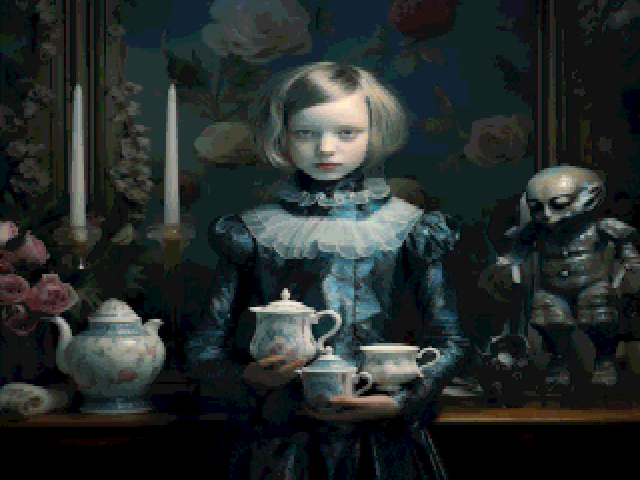
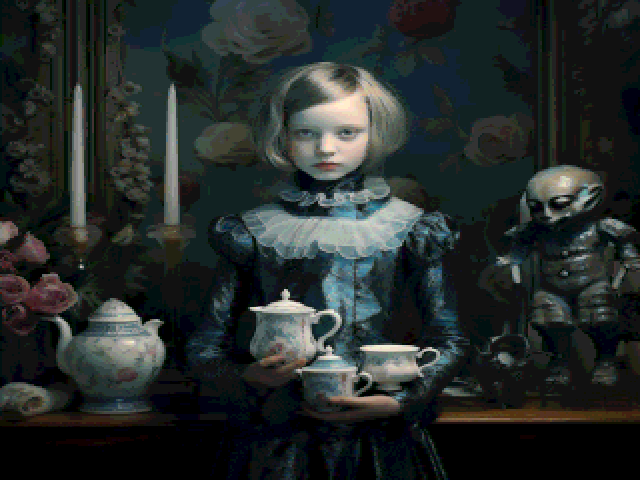
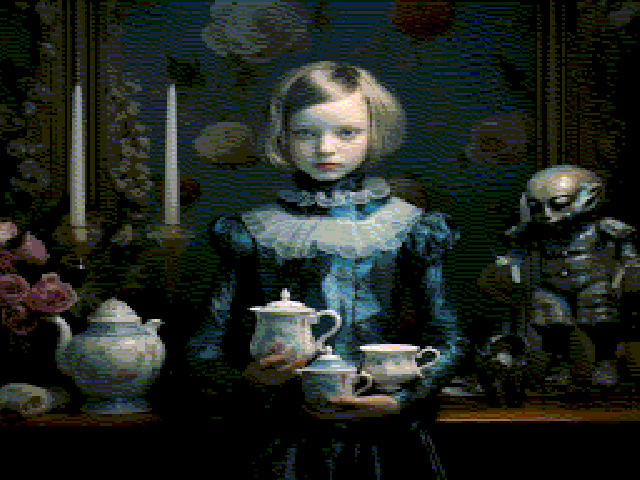
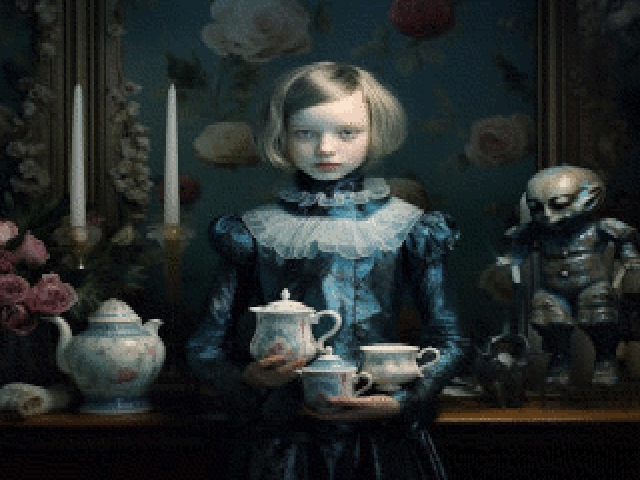
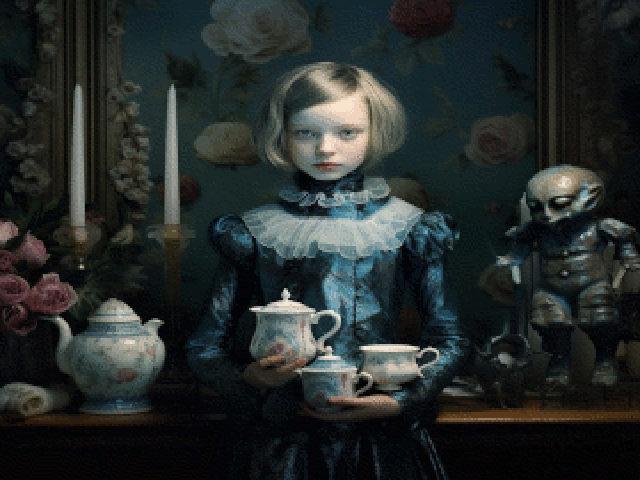
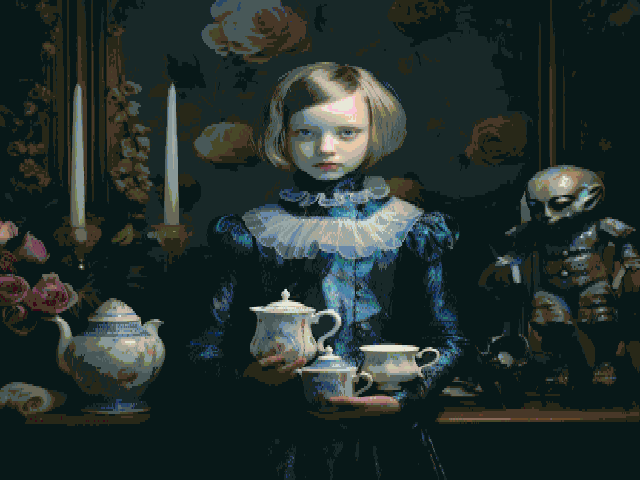
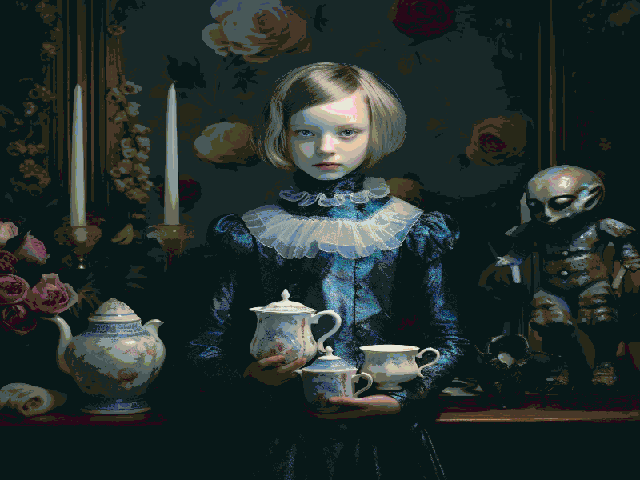

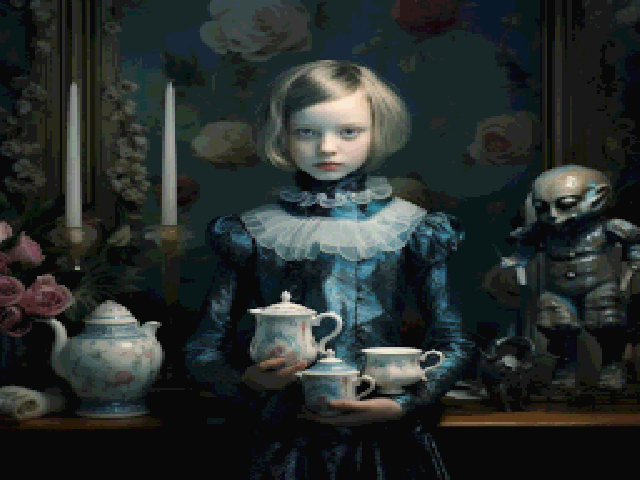
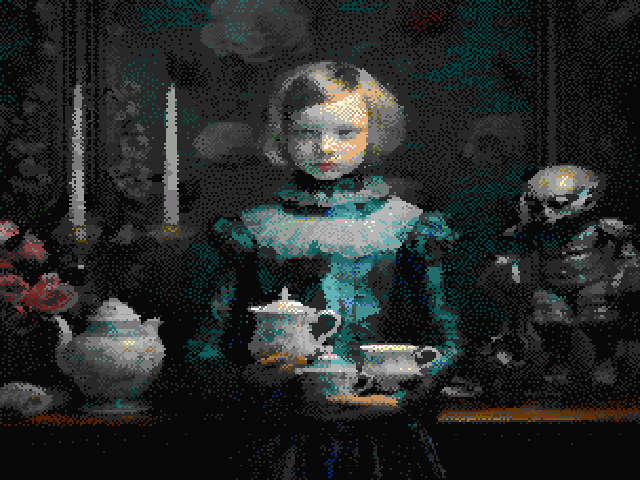
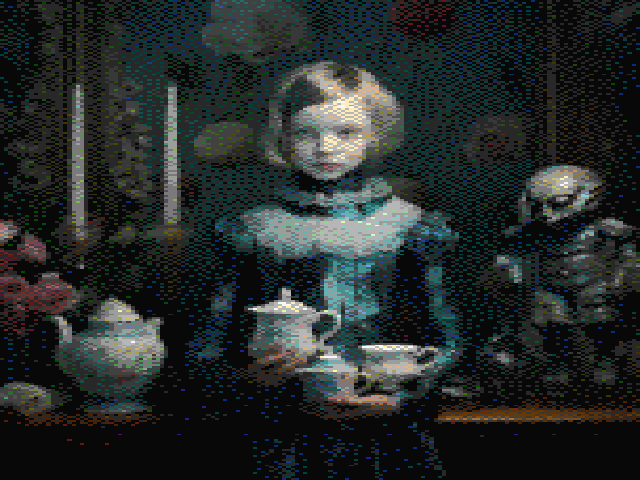
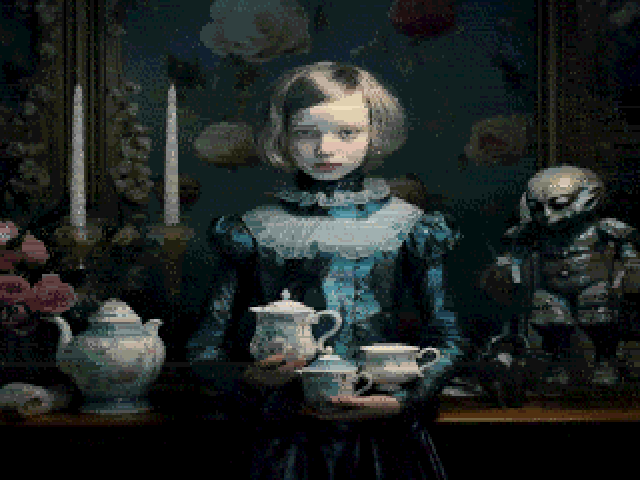
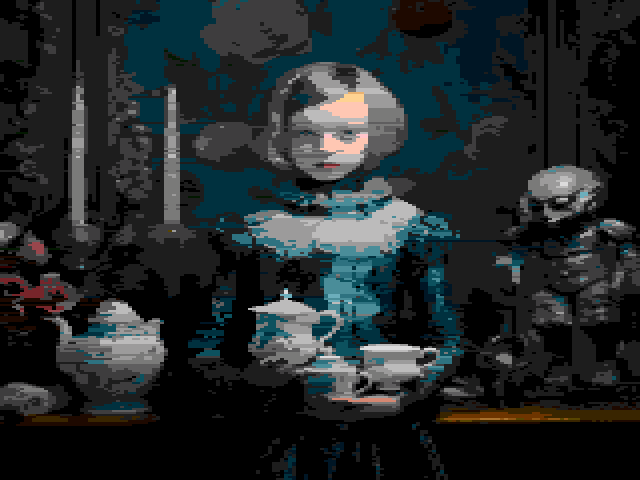
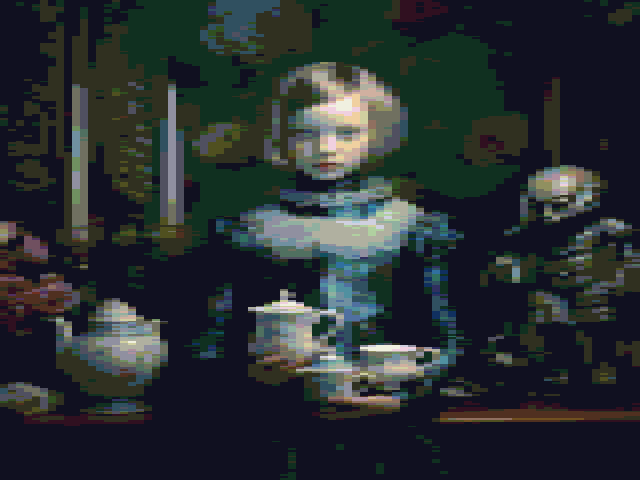
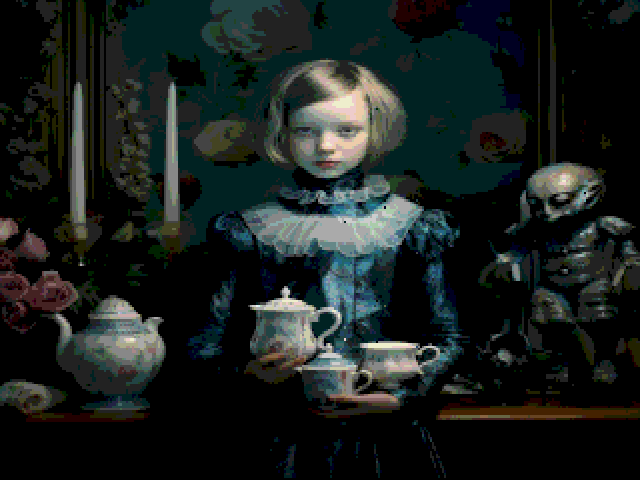

Thank you for reading. I will be glad to receive your comments and additions.